Last Updated on July 18, 2023
Are swings safe for newborns? In a word, the answer is yes. However, you must make sure that the swing does not become too hard or fast.
A newborn’s swing is a well-cushioned chair that rocks back and forth (or side to side) in the womb’s rocking motion, much like an adult swing. A baby can swing back and forth (or side to side) from birth until around 6 months old in the womb’s rocking motion.
In this blog article, we’ll talk about newborn baby swings and their safety issue. We’ll also provide parents with pointers on introducing their children to the pleasures of swinging!
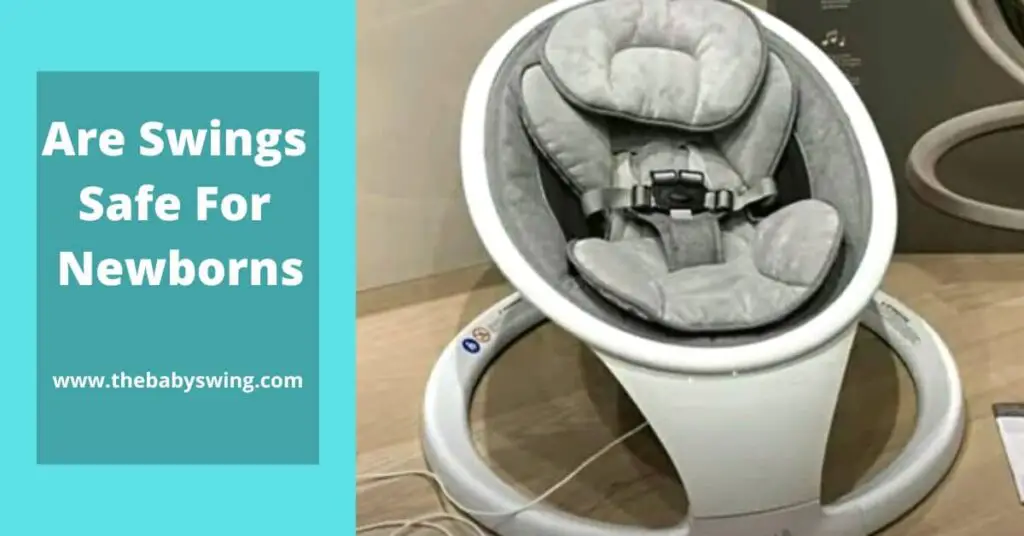
- Are swings safe for newborns?
- When can you put a baby in a baby swing?
- When do babies stop using a swing?
- How long can a baby stay in a swing for?
- Can you swing a baby too much?
- Are baby swings too fast for newborns?
- Is it safe to let baby sleep in swing?
- Why are baby swings not safe for sleep?
- What Dangers Do Baby Swings Pose?
- Is baby sleeping in swing bad for spine?
- Other Risks of Infant Swings
- Safest Ways to Use Baby Swings
- FAQs
- The Takeaway
Are swings safe for newborns?
Yes, swings are safe for newborns when used properly. Always read the manufacturer’s instructions carefully and make sure that the swing is properly assembled before using it. When using the swing, always keep a close eye on your baby and never leave them unattended.
The American Academy of Pediatrics (AAP) warns against allowing your infant to fall asleep in any infant sitting device, such as bouncers, swings, and other carriers. For the first year of life, there is a real danger in putting your baby to sleep anywhere but on a flat, hard surface on their back.
When can you put a baby in a baby swing?
You can put a baby in a baby swing at birth and for a period of time after your baby reaches a certain weight limit, generally 25 to 35 pounds. However, the best time to put your baby in a swing is when they can hold their head up and don’t move much.
The Academy of American Pediatrics (AAP) advises that a baby swing should be used in the most reclined position for any baby under four months old.
If your baby can sit up on their own, you can use the swing in a more upright position. When your baby reaches six months old, they may be ready to transition to a regular swing or playpen.
If you are using a baby swing for your infant, it is important to always stay nearby and never leave them unattended. The AAP also advises against using a baby swing for more than 30 minutes at a time.
Also read: What age can a baby use a swing
When do babies stop using a swing?
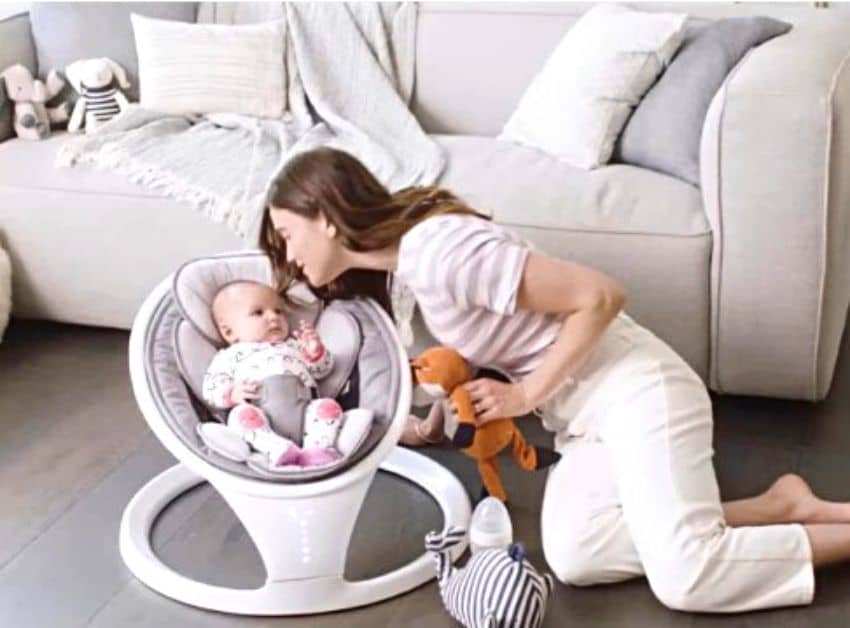
When your baby reaches three to four months, it’s time to retire the swing. SIDS is still a concern if you put them down on a flat surface to sleep or put them down while they’re drowsy.
Most babies will enjoy using a swing until they are around 4 to 6 months old. After that, they may become less interested in the motion and more interested in exploring their surroundings.
Some babies may use a swing until they are 9 to 12 months old, while others may only use it for a few weeks or even just a few days. It really depends on the individual child. If your baby seems to be losing interest in the swing, it’s probably time to move on to other activities.
How long can a baby stay in a swing for?
The American Academy Of Pediatrics advises that a baby should not stay in a swing for more than 30 minutes at a time (or one hour a day).
This is to prevent the baby from getting too used to the motion and becoming dependent on it.
However, it is important to make sure that the baby is not left unattended in the swing and that they are not left in the swing for too long. If the baby seems uncomfortable or is crying, it is probably time to take them out of the swing.
Can you swing a baby too much?
There’s no such thing as swinging a baby too much! Babies love the sensation of being swung around and can help soothe them.
Experts advise keeping your baby’s time in a motorized swing to an hour or less per day. Despite the fact that your infant may enjoy it – and it might be a lifesaver during the newborn months – try not to rely on it too much.
And Just be sure to hold on tight and use gentle motions so you don’t accidentally drop the little one.
Also Read: Can you swing a baby too much
Are baby swings too fast for newborns?
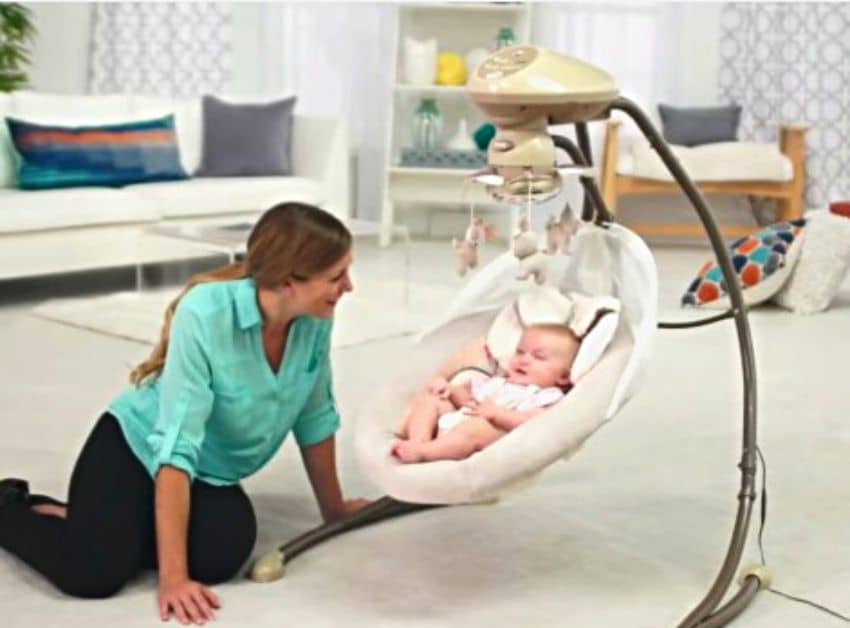
No, the medium swing setting is just perfect for a newborn. However, if you feel that your baby is uncomfortable, you can use the lowest setting.
But it depends on the baby’s weight too. A heavier baby may need a faster swing speed to get comfortable, while a lighter or premature baby may prefer a slower speed.
You’ll just have to experiment a bit to see what your little one prefers.
In addition, some newborns don’t love to stay in the swing. So, you might want to try other ways to soothe your baby, such as rocking him in a chair or holding him in your arms.
Is it safe to let baby sleep in swing?
According to the American Academy of Pediatrics, infant swings are not recommended for sleep. “Babies should sleep on their backs on firm, flat surfaces,” Sneed added. “A baby sleeping on an unstable surface is at a greater risk of SIDS.”
However, the baby can use the swing for supervised awake time only. So if you’re hoping to use the swing as a way to lull your baby to sleep, it’s best to move them to a firm, flat surface after they fall asleep.
If your baby just loves being in the swing and you’re using it for awake time only, then it’s probably fine. Just be sure to never leave your baby unattended in the swing.
Also read: Can baby sleep in a swing
Why are baby swings not safe for sleep?
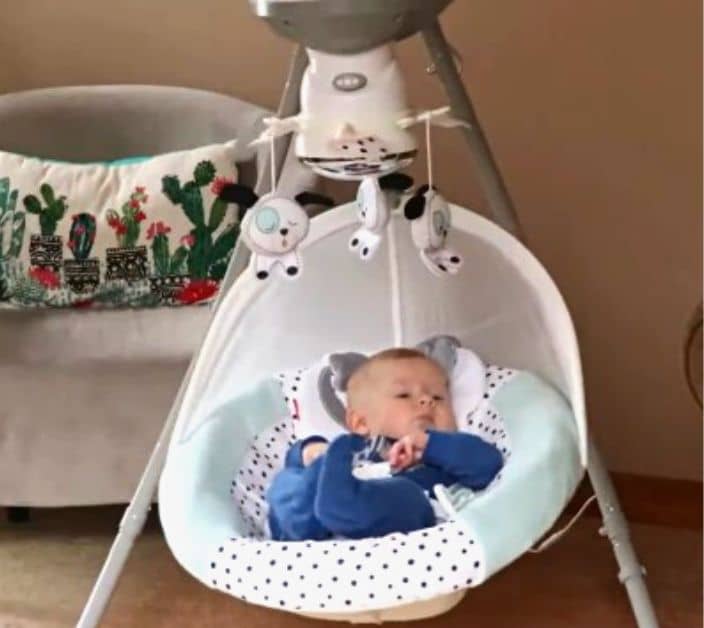
There are a few reasons why baby swings are not considered safe for sleep.
First, baby swings can create a hazardous environment if not used properly. When a baby is in a swing, they are at increased risk of falling and being injured.
But the most important reason is their neck muscles not being entirely developed; thus, sleeping at a semi-upright angle may put a strain on their necks and cause them to slump over. In certain situations, this stooping might result in suffocation risk.
Additionally, baby swings can also increase the rate of suffocation hazard if the child’s head becomes trapped between the seat and the back of the swing.
Finally, baby swings can also be a source of loud noise, disrupting a child’s safe sleep guidelines pattern and leading to the risk of sleep.
While incorrect harness use was the biggest risk factor, other risk factors resembled those for SIDS: infants born prematurely or at a low birth weight (less than 5.5 pounds) and secondhand smoke exposure.
For these reasons, it is generally recommended that babies only use swings for short periods of time while awake and supervised.
What Dangers Do Baby Swings Pose?
Baby swings are a popular piece of baby equipment, often used to soothe and entertain infants. However, baby swings can pose real dangers to babies, including the risk of head injuries, strangulation, and entrapment.
Strangulations and asphyxiations are the most potential dangers posed by baby swings. The danger from baby swings and other seating devices is that when your child falls asleep in a semi-upright position, their head droops to their chin, raising the likelihood risk of suffocation.
According to the CPSC, 320 fatalities have been recorded during the three-year period from 2014 to 2016—an average of 107 fatalities each year—as a consequence of nursery products (i.e., in use at the time of the incident), but not necessarily caused by, among children aged birth to five years old.
Cribs/mattresses, playpens/play yards, bassinets/cradles, infant carriers, and portable baby swings were linked to 84 percent of the fatalities observed.
Positional asphyxia, strangulation, and drowning were some of the causes of death. In some situations, the deaths were attributed to the product; in other cases, they resulted from a hazardous environment around or in proximity to the item.
There were about 2400 and 1800 children younger than age five who were treated in the emergency department for injury as a result of nursery products in 2017-2018.
Is baby sleeping in swing bad for spine?
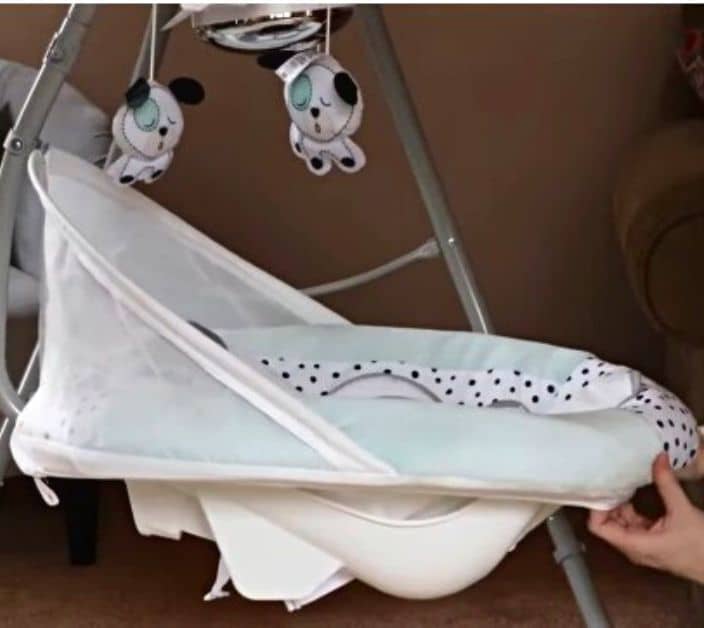
Since there is some scientific evidence specifically addressing the issue of whether or not a baby sleeping on swings is bad for spine development, the AAP (American Academy of Pediatrics) counseled against it. And said, Yes, they shouldn’t because there is some risk of cot death. They suggest that a flat spot and a firm surface are best for child sleep, and there is no sleeping risk.
However, it is generally believed that spending extended periods of time in any fixed position, especially during early infancy when the spine is still developing, can potentially lead to problems with spine alignment or curvature later on in life.
Therefore, it is generally recommended that babies be placed in a variety of positions during sleep, rather than left to sleep in one position for prolonged periods of time. If you are concerned about your baby’s spine development, please consult your pediatrician for further guidance.
Other Risks of Infant Swings
Already we said that strangulations and asphyxiations are the most dangerous risk for infant swings. Strangulation can happen if a baby’s neck muscle tone gets caught in straps, cords, or other objects that are attached to the swing. Some risks are discussed below.
Head injuries are a particular concern with infant swings. Between May 2011 and May 2012, the CPSC received reports of 351 swing-related injuries in infants that occurred between 2009 and 2012. Two of the incidents resulted in fatalities, while 349 others were nonfatal; 24 of those nonfatal incidents resulted in damage.
Another risk of infant swings is entrapment. Entrapment can occur when a baby’s head or the body becomes caught between the swing seat and the frame or when clothing gets entangled in the moving parts of the swing.
To help prevent these hazards, always use the safety guidelines systems on swings, make sure babies are never left unattended in a swing, and keep cords and loose clothing away from the swing area. Also, regularly check swings for wear and tear, and never use a damaged or broken swing.
Safest Ways to Use Baby Swings
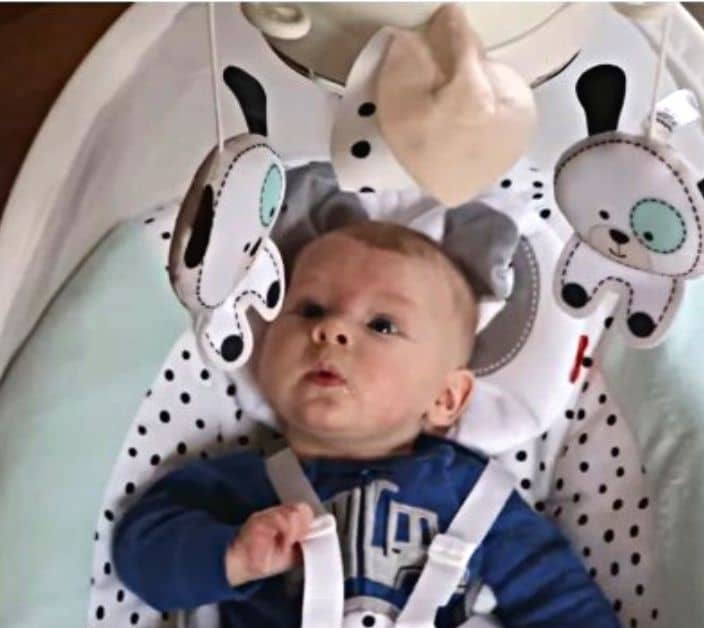
Make sure your baby swing can’t easily fall over or fold up. Always use the provided shoulder straps on a baby swing and ensure you follow directions.
Always remember the baby swing weight limit. If the baby reaches the swing’s maximum weight capacity, you should immediately stop using it. Otherwise, the device might break, and your baby can be injured.
If your baby swing has a rear handle, carefully position it so that if the baby seat falls forward, it won’t actually fall out of its socket; otherwise, the rear handle might get caught in something while you’re swinging.
When using a baby swing, always follow the manufacturer’s instructions. Never put a baby in a swing without first securing it to something sturdy. Also, make sure the swing is in good condition and all the parts are working properly.
When your baby is in the swing, never leave them unattended. Always stay close by and never leave the room while your baby is in the swing. And never swing when it is tummy time.
Also, use only the appropriate size swing for your baby. Do not put anything else in the swing with your baby, such as toys or blankets.
Finally, always use common sense and never use a baby swing near water or uneven ground.
Following these simple tips will help ensure that your baby has a safe and enjoyable experience while using a baby swing.
FAQs
The Takeaway
We hope you’ve found this article informative and helpful. So, yes, baby swings are a safe and convenient way to soothe your baby when used correctly. However, it’s important to follow all safety guidelines when using a baby swing. If you have any concerns about your baby’s safety, talk to your pediatrician.
References:

Amy A. Vincent is a Certified Pediatric Sleep Consultant and a mother of three beautiful children. She helps parents transition their babies from swing sleep to safe, independent sleep. She is passionate about helping parents teach their children the skills needed to become good sleepers and aims to make the process as easy and stress-free as possible. Read more
